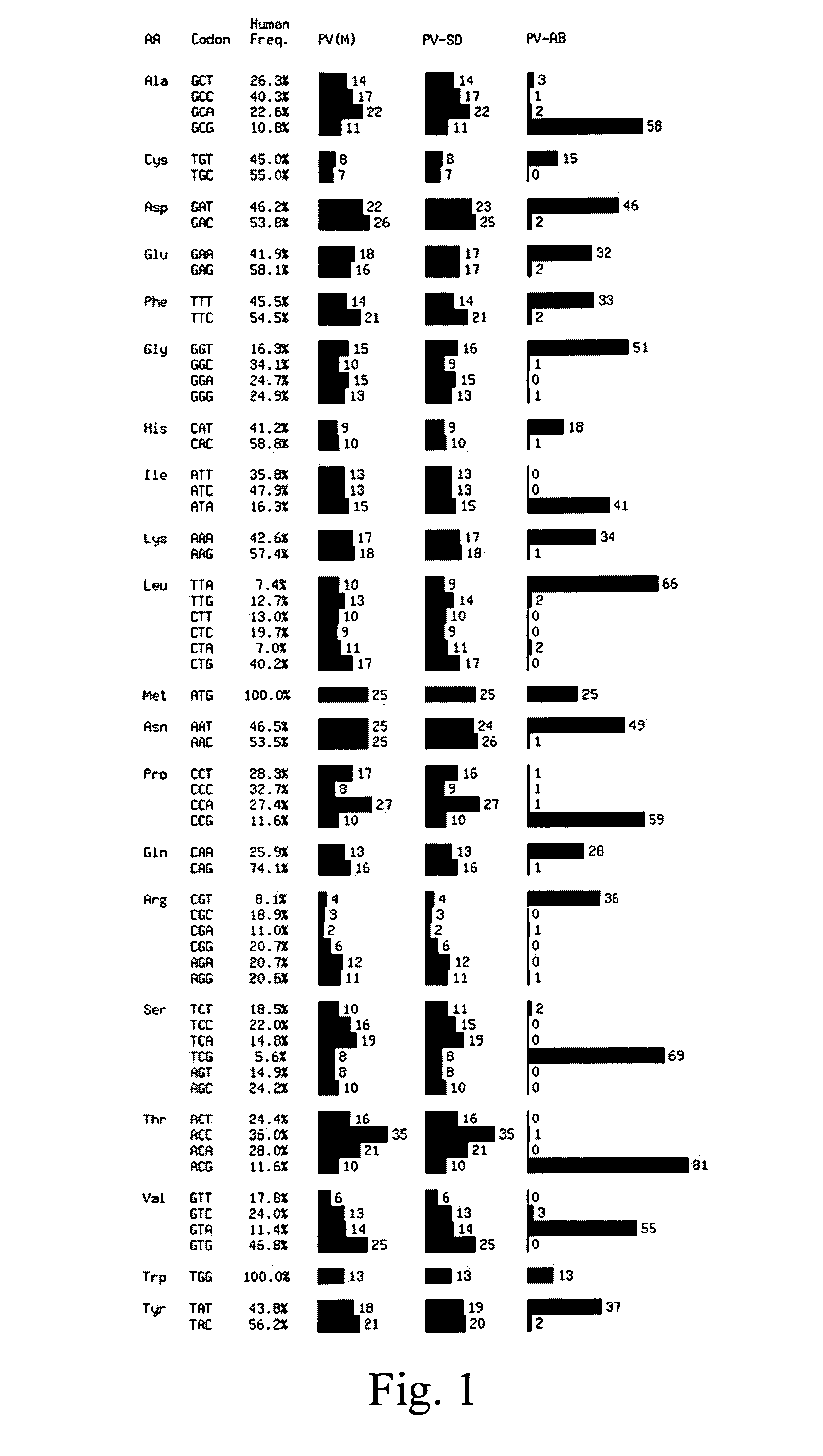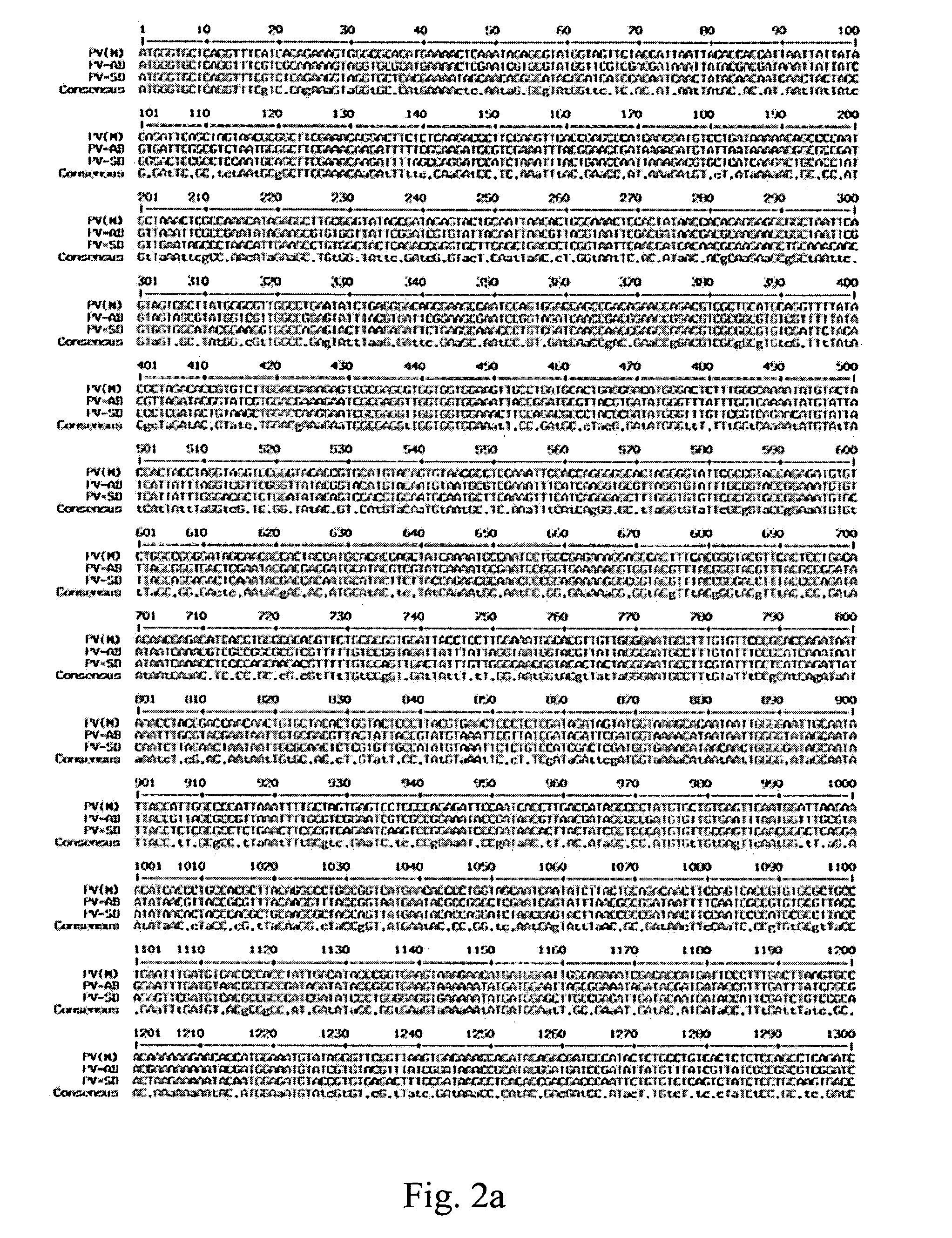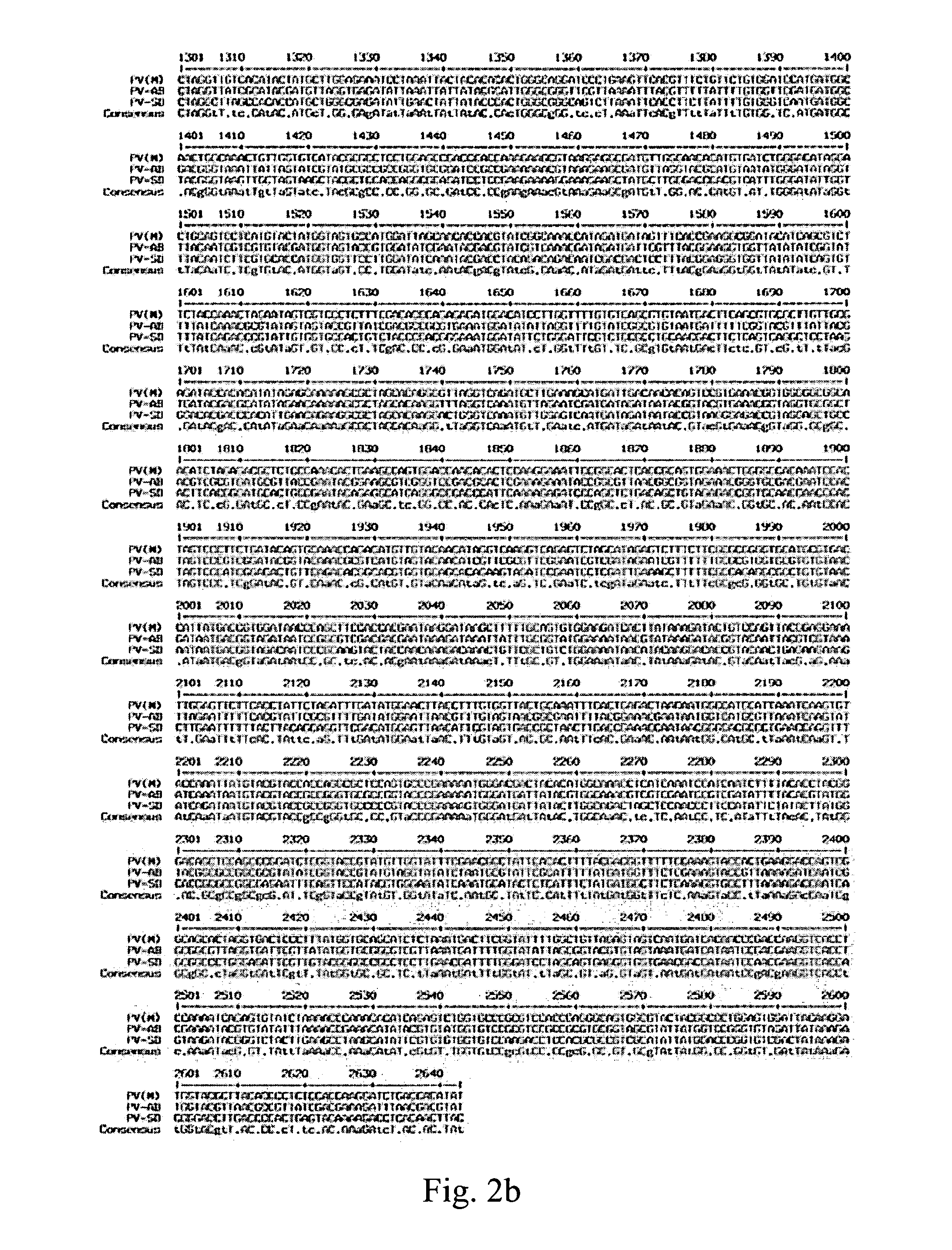Attenuated viruses useful for vaccines
a technology of attenuated viruses and vaccines, applied in the field of attenuated viruses, can solve the problems of difficult treatment, relatively short viral genome, and difficult to reproduce, and achieve the effects of slowing the progression rate, preventing the onset of a new virus, and reducing the number of viruses
- Summary
- Abstract
- Description
- Claims
- Application Information
AI Technical Summary
Benefits of technology
Problems solved by technology
Method used
Image
Examples
example 1
[0192]Re-Engineering of Capsid Region of Polioviruses by Altering Codon Bias
[0193]Cells, Viruses, Plasmids, and Bacteria
[0194]HeLa R19 cell monolayers were maintained in Dulbecco's modified Eagle medium (DMEM) supplemented with 10% bovine calf serum (BCS) at 37° C. All PV infectious cDNA constructs are based on PV1(M) cDNA clone pT7PVM (Cao et al., 1993; van der Werf et al., 1986). Dicistronic reporter plasmids were constructed using pHRPF-Luc (Zhao and Wimmer, 2001). Escherichia coli DH5α was used for plasmid transformation and propagation. Viruses were amplified by infection of HeLa R19 cell monolayers with 5 PFU per cell. Infected cells were incubated in DMEM (2% BCS) at 37° C. until complete cytopathic effect (CPE) was apparent or for at least 4 days post-infection. After three rounds of freezing and thawing, the lysate was clarified of cell debris by low-speed centrifugation and the supernatant, containing the virus, was used for further passaging or analysis.
[0195]Cloning of S...
example 2
[0207]Effects of Codon-Deoptimization on Growth and Infectivity of Polioviruses
[0208]Determination of Virus Titer by Infected Focus Assay
[0209]Infections were done as for a standard plaque assay. After 48 or 72 h of incubation, the tragacanth gum overlay was removed and the wells were washed twice with phosphate-buffered saline (PBS) and fixed with cold methanol / acetone for 30 min. Wells were blocked in PBS containing 10% BCS followed by incubation with a 1:20 dilution of anti-3D mouse monoclonal antibody 125.2.3 (Paul et al., 1998) for 1 h at 37° C. After washing, cells were incubated with horseradish peroxidase-labeled goat anti-mouse antibody (Jackson ImmunoResearch, West Grove, Pa.) and infected cells were visualized using Vector VIP substrate kit (Vector Laboratories, Burlingame, Calif.). Stained foci, which are equivalent to plaques obtained with wt virus, were counted, and titers were calculated as in the plaque assay procedure.
[0210]Codon-Deoptimized Polioviruses Display Sev...
example 3
[0217]Effects of Codon-Deoptimization on Specific Infectivity of Polioviruses
[0218]Molecular Quantification of Viral Particles: Direct OD260 Absorbance Method
[0219]Fifteen-centimeter dishes of HeLa cells (4×107 cells) were infected with PV(M), PV-AB755-1513, or PV-AB2470-2954 at an MOI of 0.5 until complete CPE occurred (overnight versus 4 days). Cell-associated virus was released by three successive freeze / thaw cycles. Cell lysates were cleared by 10 min of centrifugation at 2,000×g followed by a second 10-min centrifugation at 14,000×g for 10 min. Supernatants were incubated for 1 h at room temperature in the presence of 10 μg / ml RNase A (Roche) to digest any extraviral or cellular RNA. After addition of 0.5% sodium dodecyl sulfate (SDS) and 2 mM EDTA, virus-containing supernatants were overlaid on a 6-ml sucrose cushion (30% sucrose in Hanks balanced salt solution [HBSS]; Invitrogen, Carlsbad, Calif.). Virus particles were sedimented by ultracentrifugation for 4 h at 28,000 rpm u...
PUM
| Property | Measurement | Unit |
|---|---|---|
| length | aaaaa | aaaaa |
Abstract
Description
Claims
Application Information
 Login to View More
Login to View More - R&D
- Intellectual Property
- Life Sciences
- Materials
- Tech Scout
- Unparalleled Data Quality
- Higher Quality Content
- 60% Fewer Hallucinations
Browse by: Latest US Patents, China's latest patents, Technical Efficacy Thesaurus, Application Domain, Technology Topic, Popular Technical Reports.
© 2025 PatSnap. All rights reserved.Legal|Privacy policy|Modern Slavery Act Transparency Statement|Sitemap|About US| Contact US: help@patsnap.com



